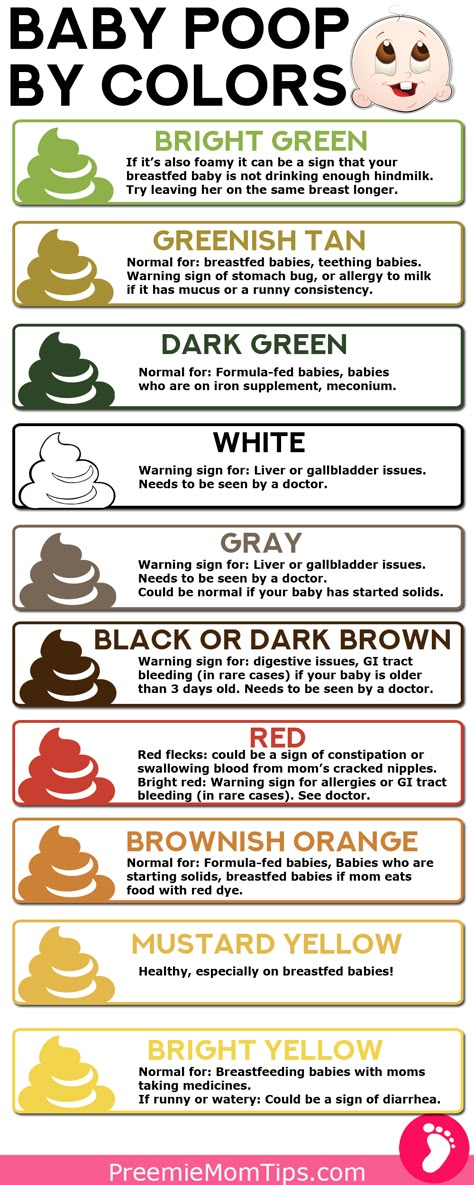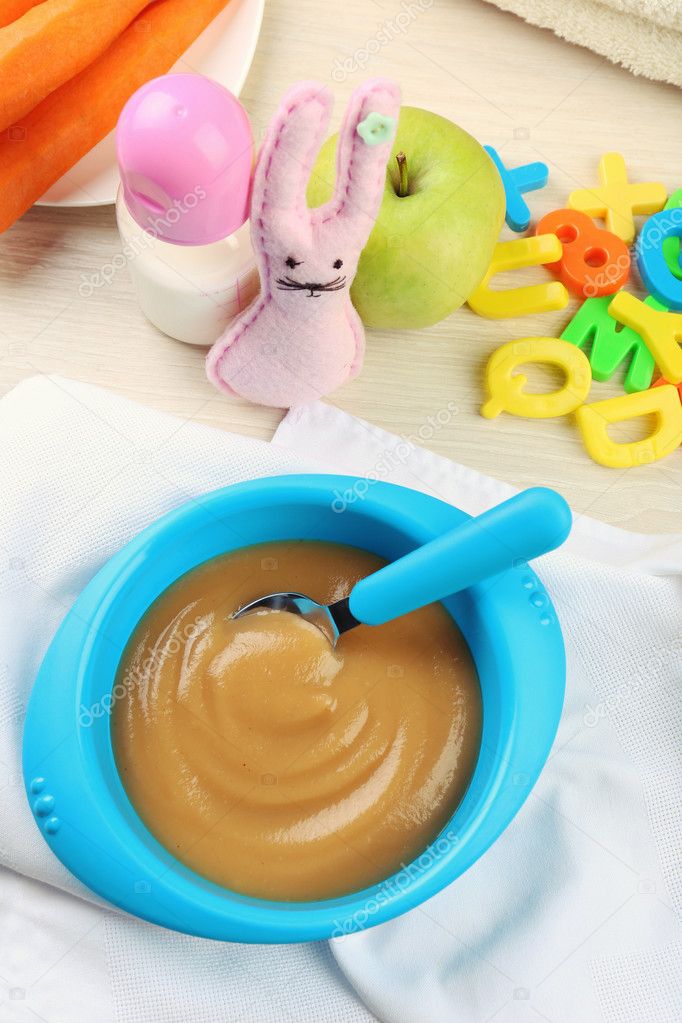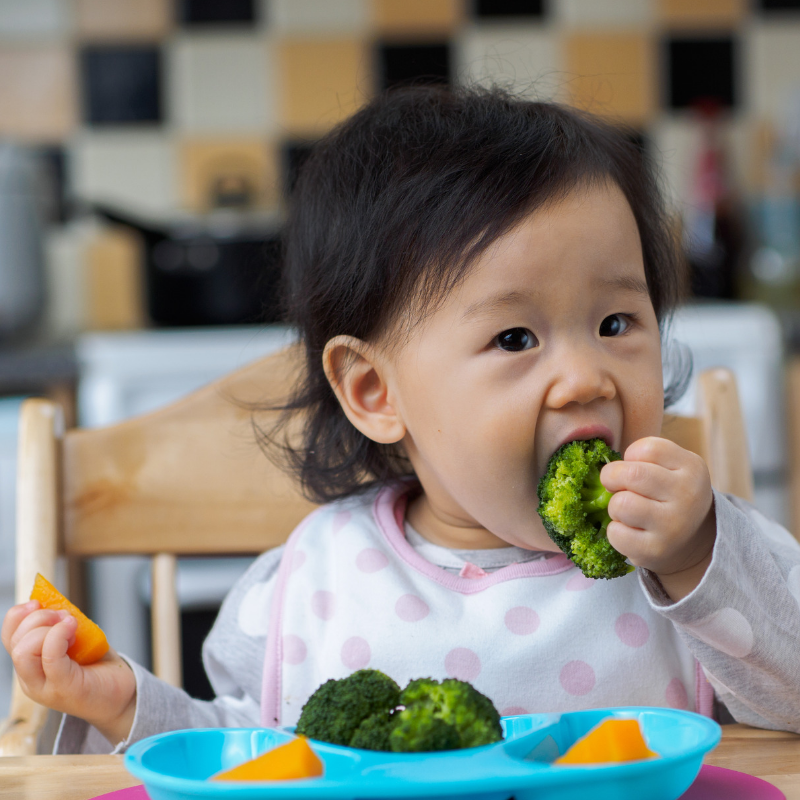When do babies start eating stage 3 foods
When is a child ready to try thicker solids?
Your baby’s made it through cereal mush, soupy carrots and ever-so-slightly texturized chicken and squash dinners. Now it’s time for the real culinary fun to start — welcome to Stage 3 baby food!
“Once your baby has successfully eaten Stage 2 foods, which have some texture to them, they can start Stage 3,” says Dr. Melanie Custer, a pediatrician at West Bend Pediatrics, Children’s Wisconsin.
How do you know your baby is ready to make the leap from purees to slightly more sophisticated fare? Here, experts and parents weigh in on moving on to Stage 3 baby food. Time to dig in!
What is Stage 3 baby food?
Most jars of Stage 3 baby food are still pretty pureed (hence, the jars), but your little one needn’t be restricted solely to foods that are, for all intents and purposes, mush. Instead, you can steer your budding gourmand toward soft, small pieces of whatever you’re having. Think: cut-up pieces of turkey meatballs, banana chunks and small squares of tofu.
“Stage 3 baby foods are thick blended foods with chewable chunks, such as the kind you find at the grocery store, or small cut-up pieces of easily chewed table foods, which are usually referred to as ‘finger foods’,” says Dr. Kristen Treegoob, a pediatrician at Children’s Hospital of Philadelphia. (Avoid placing chunks of food in blends and purees, as it may cause a choking risk.)
“Stage 3 baby foods are thick blended foods with chewable chunks, such as the kind you find at the grocery store, or small cut-up pieces of easily chewed table foods, which are usually referred to as ‘finger foods.'”
DR. KRISTEN TREEGOOB, PEDIATRICIAN
And be sure to bear in mind that every child is different and develops at their own individual pace. Check with your child’s doctor for baby food recommendations during the first year.
When to start Stage 3 baby food
“Typically, 9 months is the age babies start eating Stage 3 foods,” says Dr. Zulma Laracuente, a pediatrician in Alexandria, Louisiana.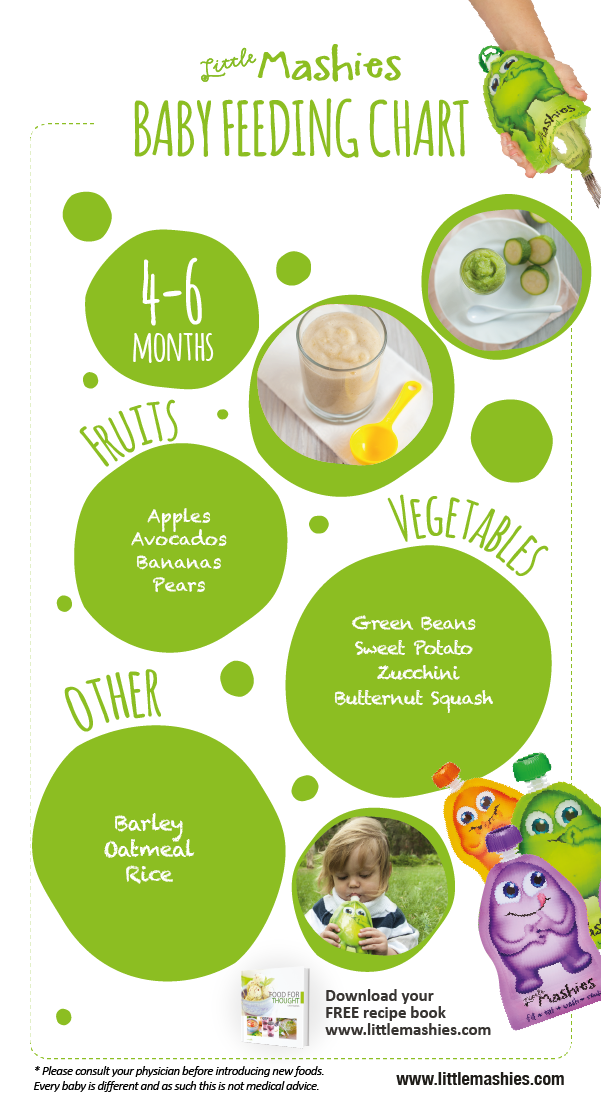 “But, generally-speaking, 9 to 12 months is considered a time of slowly transitioning your baby to table food.” (In other words, no more cooking and serving separate meals!)
“But, generally-speaking, 9 to 12 months is considered a time of slowly transitioning your baby to table food.” (In other words, no more cooking and serving separate meals!)
Does that mean you baby is ready to tuck into a T-bone steak with a side of broccoli rabe? No. At least, not in the traditional form. But as long as food is small and very easy for baby to work through, it’s OK.
While the idea of having your 10-month-old feed themselves while you sit down to your own meal probably sounds heavenly, bear in mind, every child gets there in their own time.
“My first child couldn’t wait to eat mashed up meatballs and soft carrots on his own,” says mom of two Jennifer Reilly of New York City. “But my second? Not so much. Aside from puffs, I was still spoon-feeding him at nearly a year!”
Signs baby is ready to start Stage 3 or finger food
As your baby’s oral skills and hand-eye coordination develop, they’re moving closer to being able to feed themselves, either with their hands or a spoon. (Though, according to the Cleveland Clinic, babies usually don’t get the hang of utensils until at least 12 months.)
(Though, according to the Cleveland Clinic, babies usually don’t get the hang of utensils until at least 12 months.)
According to Jenifer Thompson, R.D., an advanced practice dietician at Johns Hopkins in Baltimore, babies can move past traditional baby foods and onto “pick-ups” (finger foods) as their pincer grasp skills are honed.
“By the time baby is between 8 to 12 months old, they should be able to pick up small, soft pieces of finger foods with their finger and thumb and bring them to their mouth,” she says.
Other signs your baby is ready to take meal time into their own hands? They tell you — as only a baby can.
“I knew my son was ready to try table foods when he started grabbing at the spoon every time I went to feed him,” says mom of two Darcy McConnell of Garwood, New Jersey. “Even though he didn’t actually use a fork or spoon for a few months, he loved holding on to them while he picked up his food. It was so cute!”
What Stage 3 foods to start with
Once you’ve hit the Stage 3 phase, (almost) anything goes, as long as it’s the right texture for baby. For instance, it’s OK to feed your child what the rest of the family is having for dinner, as long as you take proper precautions, such as making sure food is easy to chew and cut up into small pieces.
For instance, it’s OK to feed your child what the rest of the family is having for dinner, as long as you take proper precautions, such as making sure food is easy to chew and cut up into small pieces.
“Once babies are about 9 months old, they should safely be able to self-feed a variety of foods,” says Treegoob.
At this point in your baby’s life, solid food is starting to make up a significant part of their diet, so it’s important to offer foods that are nutritious. Also, exposing your child to different foods that are nourishing from an early age can help lay the groundwork for good, long-term habits.
“Parents should introduce a variety of healthy foods from different food groups with different textures by the end of the first year in order to help with healthy eating habits,” says Thompson.
“Parents should introduce a variety of healthy foods from different food groups with different textures by the end of the first year in order to help with healthy eating habits.
jenifer thompson, advanced practice dietician”
Here are a few good choices for Stage 3 foods, according to Thompson and Treegoob:
- Well-cooked vegetables of any variety.
- Ripe fruits of any variety. (Mashed or cut-up bananas work very well at this stage.)
- Shredded meat.
- Scrambled eggs.
- Soft cheese.
- Cooked pasta.
- Small pieces of tofu.
Which foods to avoid during Stage 3
When your baby starts eating what the rest of the family is having, by all means, rejoice over having to prepare fewer dishes. However, if you’re hitting up the drive-thru after soccer practice with your older kid, skip the Happy Meal for your baby, regardless of how you serve it.
“When it comes to feeding babies, I recommend avoiding heavily salted or sweetened foods, as well as fast food,” says Treegoob.
The reason doctors advise being mindful of baby’s salt intake? In addition to it possibly contributing to bad eating habits overall, a 2011 study published in the European Journal of Clinical Nutrition found that infants who consumed over 400 milligrams of sodium per day (the maximum UK recommendation for children up to age 12 months) were potentially at risk of “harming developing kidneys” and causing “high blood pressure in later life. ”
”
According to Treegoob, parents should also avoid any foods that may pose a choking risk to children, such as:
- Popcorn.
- Whole grapes.
- Whole peanuts.
- Raisins.
- Hot dogs.
- Hard candy.
- Seeds.
And finally, parents and caregivers should understand how long baby foods last and forgo giving a baby honey until after their 1st birthday, as it can cause a botulism infection.
How to start Stage 3 foods safely
As with Stage 1 and Stage 2 baby food, babies still should eat sitting upright with an adult nearby.
“Once an infant is ready for Stage 3 solids and is able to finger feed themselves, it’s still important to watch your baby eat, so you can help pace them and identify signs of choking early,” says Treegoob. “You can also offer them sips of formula, breast milk or a little water every few bites when they begin eating more than a few ounces at a time of Stage 3 foods to make sure they don’t eat too quickly. ”
”
“Once an infant is ready for Stage 3 solids and is able to finger feed themselves, it’s still important to watch your baby eat, so you can help pace them and identify signs of choking early.”
DR. KRISTEN TREEGOOB, PEDIATRICIAN
Also, be sure the food you’re giving your baby is prepared for their developmental stage. According to Kids Health, parents should slice food up into small pieces in addition to cooking it a little longer in order to make sure it’s very soft. (And, of course, check the temperature!)
Once your baby gets a taste of “real food,” don’t be surprised if their interest in formula or breast milk wanes.
“Between 7 to 9 months, parents may notice that their baby shows interest in smaller or less frequent bottles or breastfeeds,” says Treegoob. “As long as weight remains on track and the baby is staying hydrated, there’s no cause for concern.”
According to Treegoob, babies between 4 to 6 months old typically drink between 24 to 40 ounces of breast milk or formula per day; 24 to 32 ounces from 6 to 9 months; and by 9 to 12 months, when they’re eating more table foods, that volume can decrease to as low as 16 to 24 ounces.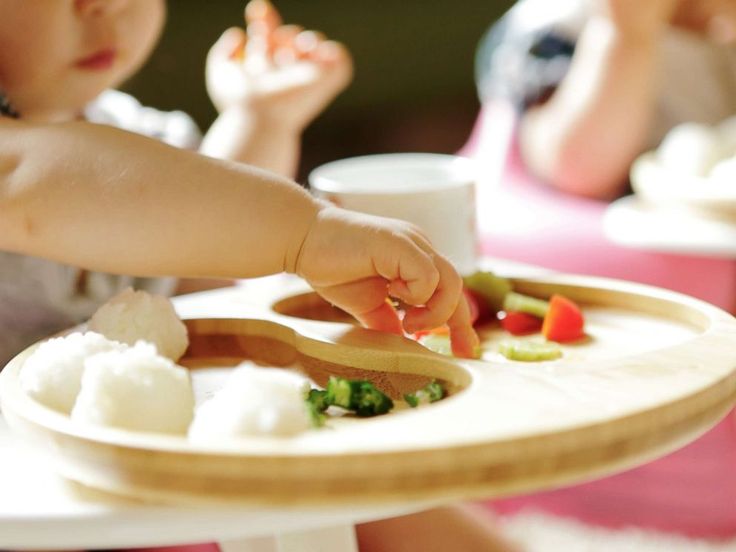
The American Academy of Pediatrics recommends giving baby between 4 to 6 ounces of breast milk or formula four times a day, along with three meals a day and two small snacks. What you give your little one is up to you — just make sure it’s healthy and texturally appropriate for their age.
Age, Food Ideas & Recipes
Home Baby Food & Nutrition Stage 3 Foods For Babies – What Are They & When to...
- Video: Stage 3 Baby Foods – What They Are & When to Introduce
- What’s Stage 3 Baby Food?
- Why is this Stage Important?
- When to Introduce Stage 3 Food
- How to Know if an Infant is Ready for Stage 3 Foods?
- Stage 3 Food Ideas
- How to Make a Safe Transition From Stage 2 to Stage 3?
- Healthy Stage 3 Food Recipes For Babies
- Foods You Should Avoid In Stage 3
- Warnings And Considerations
Last Updated on
By Stage 3, breast milk or formula milk should become a supplementary diet. Training a baby to eat baby food as their main diet is one of the key things involved in Stage three baby food. Preparation must involve introducing a variety of foods that are suitable for their age in a scheduled and patterned manner to give them a wider palate and enjoy a balanced healthy meal. Babies should have ample opportunity to chew with their growing teeth and must be offered food in soft cubes or chunks that are easy to chew. Textured food combos help in digestion and learning to taste the food and trigger their taste buds.
Training a baby to eat baby food as their main diet is one of the key things involved in Stage three baby food. Preparation must involve introducing a variety of foods that are suitable for their age in a scheduled and patterned manner to give them a wider palate and enjoy a balanced healthy meal. Babies should have ample opportunity to chew with their growing teeth and must be offered food in soft cubes or chunks that are easy to chew. Textured food combos help in digestion and learning to taste the food and trigger their taste buds.
Video: Stage 3 Baby Foods – What They Are & When to Introduce
What’s Stage 3 Baby Food?
At Stage 3 of your baby’s food sojourn, it is important to include chunky and lumpy foods.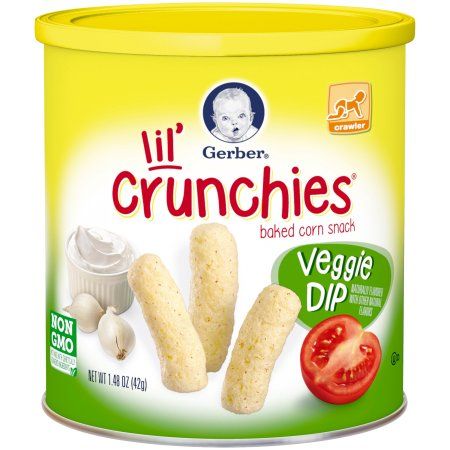 Stage 3 foods also include finger foods that babies can hold with a pincer grasp. Foods which can be sliced into bite-sized portions or mashed food with chunks to bite is the right consistency. Cooked vegetables mashed lightly or cereals with fruits diced finely are ideal to start at this stage. It is important to try various permutations and combinations of food with different tastes and textures at Stage 3. Level 3 baby food is also about introducing new eating skills ( chewing) and getting your baby to explore and learn healthy eating habits for the future.
Stage 3 foods also include finger foods that babies can hold with a pincer grasp. Foods which can be sliced into bite-sized portions or mashed food with chunks to bite is the right consistency. Cooked vegetables mashed lightly or cereals with fruits diced finely are ideal to start at this stage. It is important to try various permutations and combinations of food with different tastes and textures at Stage 3. Level 3 baby food is also about introducing new eating skills ( chewing) and getting your baby to explore and learn healthy eating habits for the future.
Why is this Stage Important?
Babies at this stage must learn to roll chunks in their mouths, gnaw and chew them and finally swallow it all without choking and gagging. The whole process is a sensory practice which takes it time to develop but your baby will learn it. Stage 3 purees (especially thick) and baby foods are important as they will help the baby to learn this sensory practice. It exposes the baby to different tastes and textures. This stage is vital to develop their sensitivities to different kinds of food.
This stage is vital to develop their sensitivities to different kinds of food.
When to Introduce Stage 3 Food
Most parents are clueless about the age when Stage 3 foods can be introduced. Stage 3 purees and baby food with chunks can be introduced to babies at around 9 months of age. By this time your child will well have had a great deal of practice of eating smooth purees of vegetables and fruits. Babies at this stage are also on a lesser routine of breast milk or formula milk. Chunky puree food is what a Stage 3 food plan for your baby should look like and nine months of age is the right time to introduce it. By this time, kids start teething and will be looking for things to chew on to help them relieve the pain of their emerging tooth. Chunky purees are a great way to help chewing tendencies and also speed up the process of teething.
How to Know if an Infant is Ready for Stage 3 Foods?
If your baby has made it through pureed, liquefied vegetables, soupy vegetables and squashed dinners, then it is probably time to move to the next stage. After about 6 months you will notice that your baby has an increased hand-eye coordination. They will be reaching out to things, trying to grab them or tip them over. All these are signs of them moving closer to becoming independent ( either with a spoon or hand). The pincer grasp develops at around 8-12 months of age and at this time babes can move past traditional pureed foods. At this time they can hold small pieces of food that are soft with their finger and thumb and bring it closer to the mouth. Babies who also start to grab things and chew them with their gums are ready to move to Stage 3. This is a clear indication that they are getting their first set of teeth and are ready to exercise their gums. Some babies will even try to grab a spoon.
After about 6 months you will notice that your baby has an increased hand-eye coordination. They will be reaching out to things, trying to grab them or tip them over. All these are signs of them moving closer to becoming independent ( either with a spoon or hand). The pincer grasp develops at around 8-12 months of age and at this time babes can move past traditional pureed foods. At this time they can hold small pieces of food that are soft with their finger and thumb and bring it closer to the mouth. Babies who also start to grab things and chew them with their gums are ready to move to Stage 3. This is a clear indication that they are getting their first set of teeth and are ready to exercise their gums. Some babies will even try to grab a spoon.
Stage 3 Food Ideas
At Stage 3, any kind of food will be right as long as the texture is right. You could serve the food your family is having but make sure the chunks are easy to chew. You need to cut up the food into tinier pieces. Solid food is taking a significant role in their diet and it is important to offer foods that are nutritious. Exposing babies to a variety of foods helps them to develop taste and lays the groundwork for a life-long healthy eating lifestyle. There are a few recommended foods that are a good choice for Stage 3 foods. You could try your own varieties apart from these:
Solid food is taking a significant role in their diet and it is important to offer foods that are nutritious. Exposing babies to a variety of foods helps them to develop taste and lays the groundwork for a life-long healthy eating lifestyle. There are a few recommended foods that are a good choice for Stage 3 foods. You could try your own varieties apart from these:
- Any kind of vegetables cooked well.
- Mashed ripe fruits ( mashed or cut bananas are great at this Stage).
- Shredded meat which is well-cooked.
- Cheese that is soft.
- Well-cooked pasta.
- Scrambled eggs.
- Tiny pieces of tofu.
How to Make a Safe Transition From Stage 2 to Stage 3?
Stage 3 foods look very different, feel different and are an entirely different sensory experience for the baby. These foods come in multiple colours and different shapes, with each spoonful presenting a different texture. Instead of one smooth texture, Stage 3 introduces soft, thick, thin, squishy and rough textures. The smell of the food will be different and babies have to work their gums, mouth, jaw and tongue. Stage 3 foods need different motor skills too. Some foods need lesser effort to chew while some may need to be rolled in the mouth, gnawed and chewed. In a nutshell, a child has to make considerable effort to adapt to Stage 3 foods. Here are a few tips on how to start stage 3 foods:
The smell of the food will be different and babies have to work their gums, mouth, jaw and tongue. Stage 3 foods need different motor skills too. Some foods need lesser effort to chew while some may need to be rolled in the mouth, gnawed and chewed. In a nutshell, a child has to make considerable effort to adapt to Stage 3 foods. Here are a few tips on how to start stage 3 foods:
- Get your baby to experiment with some “ hard munchies” like celery sticks, cucumber sticks. The aim should not be for them to swallow it but munch it. It is fine if they chew and spit it out.
- The next step should be to progress to solids that will melt in the mouth. Crackers, vegetable sticks, tiny biscuits are good choices.
- The next step will be to offer soft cubes of cooked food like cubed cooked potatoes, cubed cooked carrots or bananas.
- Then try “softer” foods like cooked pasta, muffins or lunch meats.
Once babies are used to the above, they will be ready for Stage 3 foods with mixed textures and different tastes.
Healthy Stage 3 Food Recipes For Babies
A few homemade Stage 3 baby food recipes to help you get started with:
1. Carrot Pasta
A healthy meal with hidden vegetables, this is a great Stage 2 and Stage 3 food recipe for babies and toddlers. It is also a great baby-led weaning lunch or dinner.
Ingredients
- 5 medium carrots.
- ½ dry pasta ( of any shape).
- ½ teaspoon coriander.
- ½ teaspoon of orange zest.
Method
- Fill a saucepan with water to about ¾ of its capacity. Add the carrots and cook them for about 10 minutes. Stick a fork to see if they are cooked. Once cooled, drain the water and transfer it to a blender.
- Boil the drained water in the saucepan and add the pasta. Cook for about 5-7 minutes.
- Add the coriander and orange zest to the carrots and puree for about 3 minutes. Add water if necessary.
- Transfer the pasta and carrots to the saucepan and mix it well.

2. Cheese and Potato Mash
A great way of including carbohydrates and calcium to your baby’s diet, this is a great recipe that can be made in a variety of ways.
Ingredients
- ½ medium-sized potato.
- 1/3 slice of cheese.
- 2 big spoonfuls of breastmilk (optional).
- 2 big spoonfuls of formula milk ( optional).
Method
- Wash the potato and chop them in cubes.
- Cook the potato pieces in water until soft and mushy.
- Add the breast milk or formula milk to the mashed potato. Mix it well.
- Cut the cheese slice into small pieces of 0.5 cms.
- Add the cheese to the potato mixture and mix well.
- Serve it in your child’s favourite container.
3. Oatmeal With Beets And Carrot
Yummy vegetable breakfast packed with spices and raising makes for a meal that your toddler cannot resist.
Ingredients
- 2 cups of water or milk.
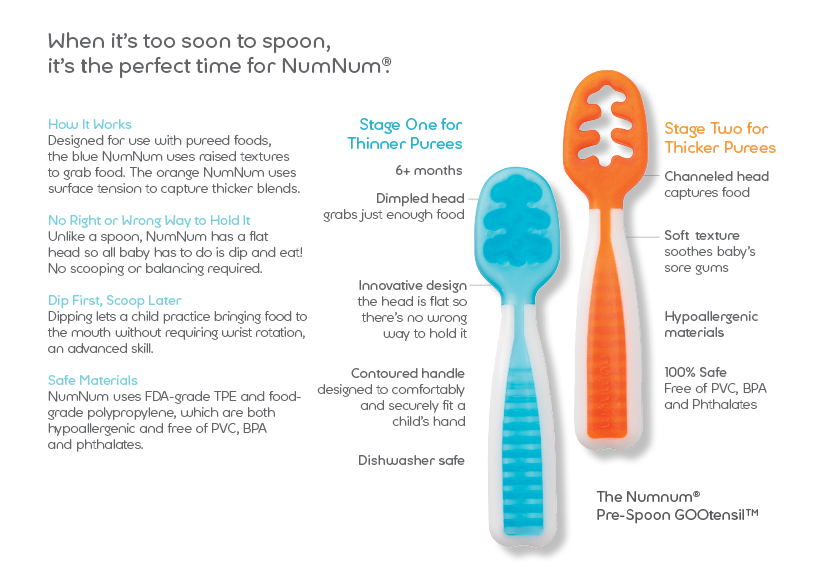
- 1 cup oats.
- ½ red beetroot.
- 1 carrot peeled, chopped and shredded.
- 1 teaspoon cinnamon.
- ¼ teaspoon cloves.
- 1/8 teaspoon nutmeg.
- 2 tablespoon raisins.
Method
- Bring water to a boil in a saucepan and add the carrots, beetroot, cinnamon, cloves, nutmeg and raisins. Give them a stir, cover and cook on low heat.
- Cook this until all the water is evaporated and everything is cooked well.
- Let the mixture cool.
- Once it is cooled, add the oatmeal and blend well in a food processor. Add in extra water, breast milk or formula milk if you need to.
Foods You Should Avoid In Stage 3
Although, Stage 3 is when you would want your child to work on their chewing skills, you must not rush into introducing any kind of food that could result in potential choking or reflux. You must also avoid foods that are heavily salted or sweetened foods. The following could be avoided for a couple of more months:
- Raisins (whole).

- Hard sweets and candies.
- Popcorn.
- Whole peanuts.
- Whole grapes.
- Hot dogs.
- Seeds.
Warnings And Considerations
Paediatricians do recommend some stages of baby food at certain ages. Marked by age and development guidelines, these foods make the jobs of parents easy and get the child to become independent eaters. Age recommendations, however, are more of a guideline. What is important is the comfort level of the child. If your child chokes or refuses to eat Stage 3 food, then leave it and try again after a few days. You child will cough a little at the start as they start experiencing the thicker consistency and lumpier foods. This should not deter you. Keep monitoring their progress and adaptability and make alterations accordingly. The baby formula at Stage 3 can be continued along with new foods introduced. Cow’s milk must not be introduced before the baby completes one year of age. Other than a few exceptions that pose risk to the baby, Stage 3 is when you can introduce a great range of foods to the baby.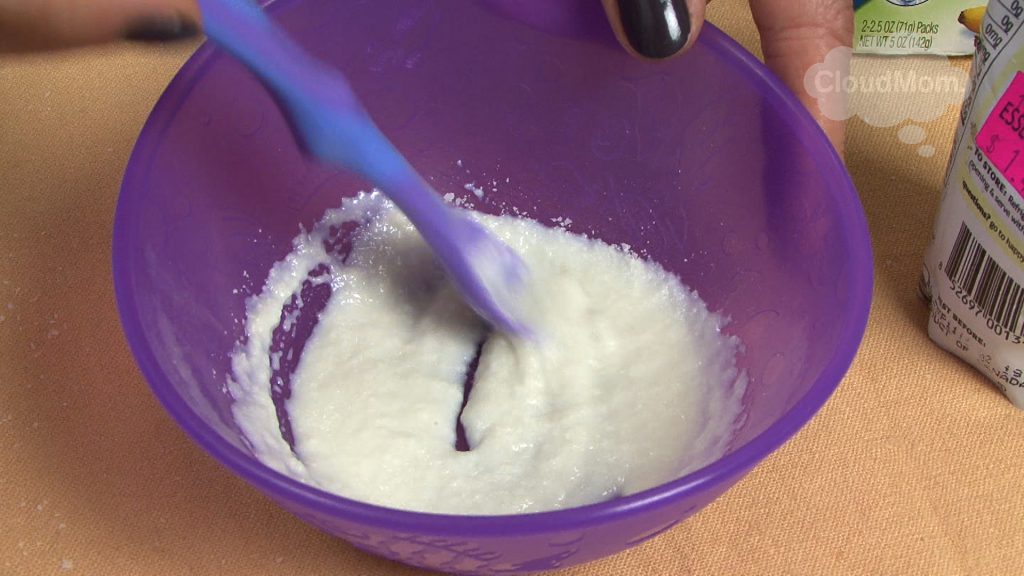
The transition from Stage 3 food to regular food will not take very long. Your baby will turn one within a few months of starting on Stage 1 foods and eating will become a family activity. Enjoy this final leap of presenting fun and delicious recipes. Keep continuing the effort even if your baby resists it until they adapt to exploring their own tastes.
Also Read:
3 Stages Of Baby Food
Introducing Solid Food To Baby’s Meal
What Should Be First Foods For Baby
Previous article6 Beautiful Easter Stories for Kids
Next articleHow Do Newborns, Babies, Infants, Toddlers, Preschoolers and Kids Differ from Each Other
Aarohi Achwal
http://parenting.firstcry.com
Aarohi Achwal holds a bachelor’s degree in Commerce and a master’s degree in English Literature. While working as an intern for an English daily, she realised that she likes writing above anything else.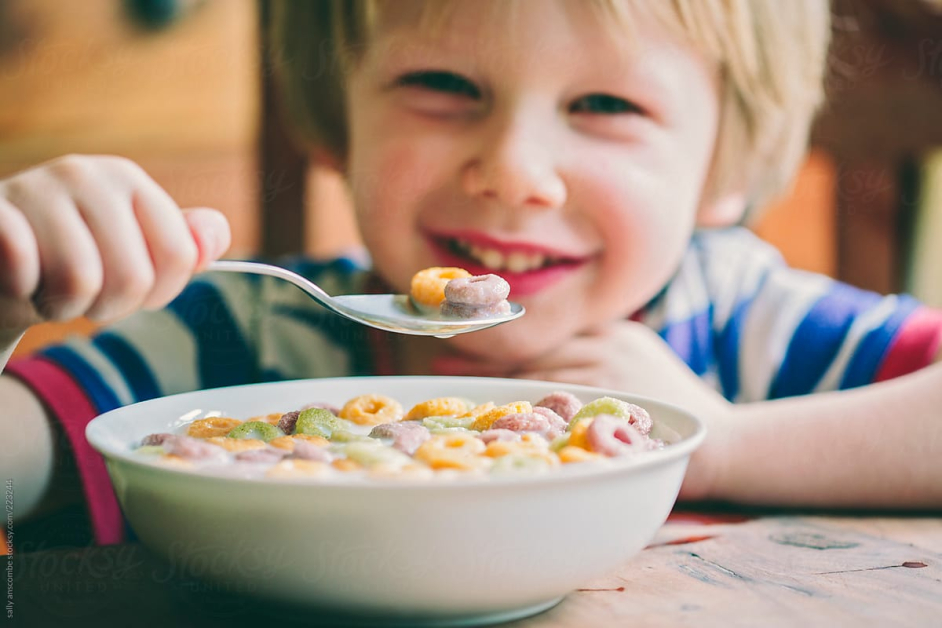 The idea of being heard without having to speak appeals to her. She likes to write research-based articles that are informative and relevant. She has written articles on pregnancy, parenting, and relationships. And she would like to continue creating content on health and lifestyle.
The idea of being heard without having to speak appeals to her. She likes to write research-based articles that are informative and relevant. She has written articles on pregnancy, parenting, and relationships. And she would like to continue creating content on health and lifestyle.
ADVERTISEMENT
POPULAR POSTS
ADVERTISEMENT
LATEST
What Do Breastfeeding Moms Really Want?
Ruchelle Fernandes -
Hands up if you thought breastfeeding would be easy – but then struggled! To mark World Breastfeeding Week in August this year, Australian breastfeeding...
0.5-3 year old child - Tarkvanem ‹ Food - Tarkvanem
Main page / Food / 0.5 - 3 year old child
Lateral navigation
- An infant between the ages of 6 months and a year must begin to receive complementary foods in addition to breast milk in order to cover the need for energy and all nutrients.
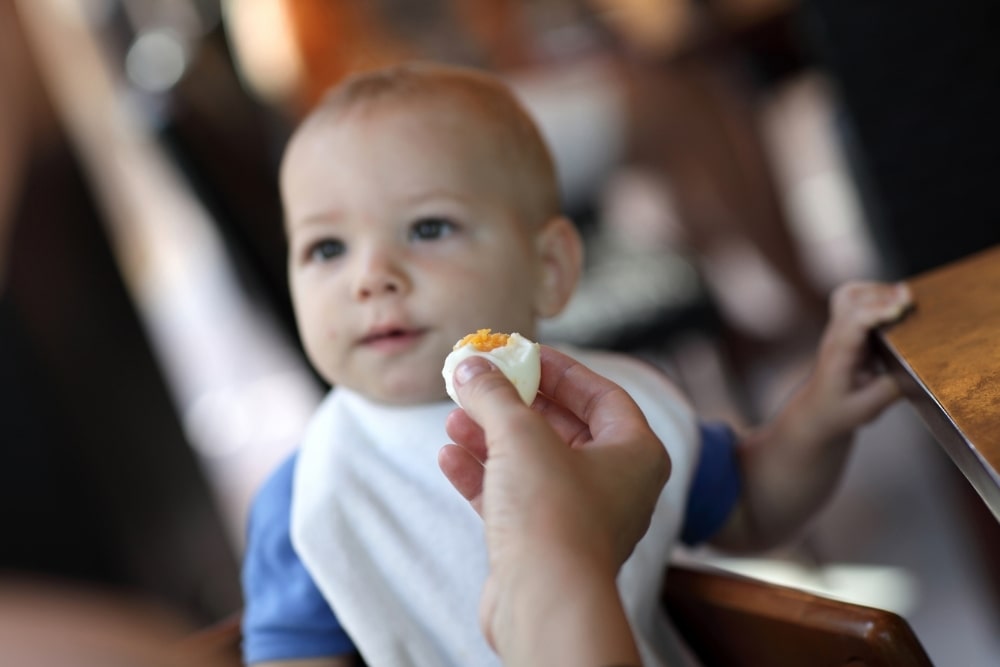
- Gradually, as the child grows, you can switch to regular food (prepared from unprocessed raw materials, without the addition of salt and sugar).
- Babies over 1 year of age can continue to receive breast milk in addition to complementary foods or normal foods, but by 2 years of age, the baby should mostly switch to regular food. In addition to the protective properties of breast milk, depending on the mother's diet, the milk tastes slightly different each time, which further helps the baby to accept different tastes when forming eating habits.
- When choosing complementary foods and regular meals, it is important to ensure that there is a variety of meals on offer. Both when breastfeeding, and when switching to complementary foods and regular food, babies can experience colic or allergies. Therefore (including during breastfeeding) those foods should be avoided or used with caution, in relation to which the mother herself or the father of the child was sensitive in childhood or remains sensitive in adulthood.

- For children over 2 years of age, the recommendations for nutrition and food selection are similar to adults, but in absolute terms, the recommended amounts are smaller.
- Remember not to teach your child to drink juice, let alone sugary drinks.
Meals
The baby's belly is small, so they need to eat more often and in smaller portions. At the same time, in terms of dental health, you should not eat more than 5 times a day. That is, 3 main meals and 1-2 small snacks are ideal.Breakfast
- Breakfast is the most important meal of the day - it provides the body with energy so that the child can play and learn new skills.
- If the child is already on a regular diet, porridge is the best choice for breakfast. Make it with a variety of grains, mixed grains, or whole grains.
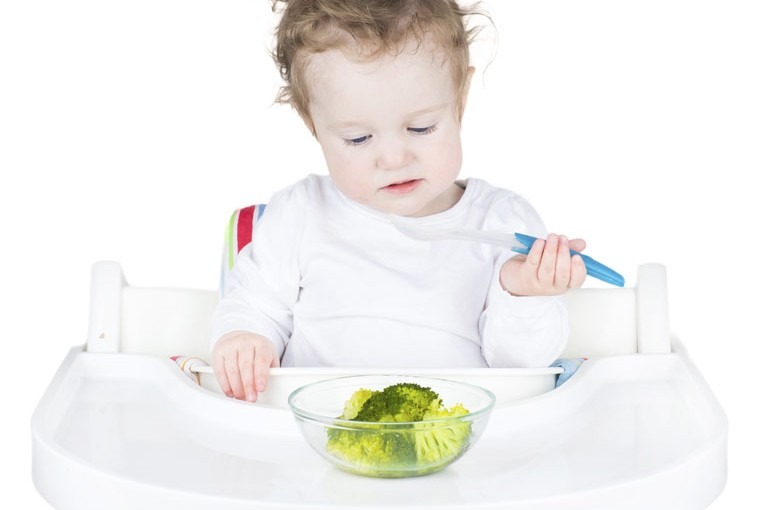 Porridge can be cooked with milk, water or a mixture of both (for children under the age of one who do not receive breast milk, with a subsequent milk formula). Milk mixtures cannot be boiled, so they are always added to food at the end of cooking. Do not add salt and sugar. Instead, flavor your porridge with a variety of fruits and vegetables (e.g. banana, peach, carrot).
Porridge can be cooked with milk, water or a mixture of both (for children under the age of one who do not receive breast milk, with a subsequent milk formula). Milk mixtures cannot be boiled, so they are always added to food at the end of cooking. Do not add salt and sugar. Instead, flavor your porridge with a variety of fruits and vegetables (e.g. banana, peach, carrot). - Egg dishes work well, but try to add vegetables to them too.
- For a young child, the best drink is milk (breast milk, formula milk) or water.
- You can give your child a few glasses of juice a week, but it's best to have it as a snack to make breakfast more energizing. Always prefer whole fruits to juices.
- On Sunday mornings, for example, pancakes can be offered. We repeat, cook them without adding salt and sugar, but add either immediately to the dough, or then berries-fruits.
- If the child attends kindergarten, weekday breakfasts should be adapted according to whether the child eats breakfast in the garden and what time he eats it.
 Breakfast does not need to be eaten immediately after waking up, but it is useful to have breakfast within an hour.
Breakfast does not need to be eaten immediately after waking up, but it is useful to have breakfast within an hour.
Snacks
- Snacking is important on infants and young children's menus because a young child can only eat a small amount of food at a time. Snacking gives him energy and various important nutrients needed for development and growth.
- Snacks should be as unprocessed as possible (eg, fresh or dry fruits and berries, vegetables, bread, juice, oatmeal, sandwiches, unflavored yogurt, also cottage cheese for children older than one year).
- Candy, crackers, cookies, soft drinks, juice drinks, ice cream, etc., are not good snacks. Even one candy or cookie between meals can ruin a child's appetite for the whole day.
- Do not give your child food as a prize or consolation, or if the child is bored.
Lunch and dinner
- Lunch and dinner can be heavy especially lunch.
 Soups and a slice of bread with soup go very well, as well as a dessert using a minimum amount of sugar, or even a small second.
Soups and a slice of bread with soup go very well, as well as a dessert using a minimum amount of sugar, or even a small second. - The smaller the child, the more it is necessary to use stewing-cooking in the preparation of his food. Great for a variety of casseroles. Since children want to see what ingredients food is made of, teaching a child to eat mixed dishes from infancy can hide vegetables in them that children do not really like.
- For dinner, a hearty vegetable salad is suitable, to which you can add an egg, cheese, fish, meat, homemade cheese or something else. If the child eats properly in the garden, the food offered at home should not be very energy intensive. Dinner can be a specific time that the family spends together where they can talk about the events of the day and be together. Here you can discuss the menu for the next day, as well as prepare for the weekend.
 Knowing the preferences of children, the child can slowly teach him to eat those foods that he usually does not eat. To do this, you can hang on the refrigerator a list of products that the child must consume during the day. In this case, it is convenient to track the choice of products and teach the child healthy eating.
Knowing the preferences of children, the child can slowly teach him to eat those foods that he usually does not eat. To do this, you can hang on the refrigerator a list of products that the child must consume during the day. In this case, it is convenient to track the choice of products and teach the child healthy eating. - A child should be taught to eat right and healthy from an early age. Habits formed in childhood often influence the choices we make later in life. Some children are quite selective in terms of what he eats and what not; It is important that you, as a parent, be an example to your child and encourage and support healthy eating habits.
- Breast milk tastes sweet, so most babies have a natural craving for anything sweet. At the same time, a child who received breast milk is more even about new tastes, because through breast milk he felt different tastes and it is easier to offer him new dishes.
- Sometimes a child may refuse certain foods, it may take up to 15 attempts before the child gets used to a new food.
 Be consistent in your decisions, feed your child with all the products necessary for his development, do not give up even when the child refuses for the first time or the first time. If the child actually completely refuses to eat something, change this product to something similar. The most important thing is not to give up. If you are breastfeeding your baby often enough at the same time, there is no need to worry about the baby, even if it takes several months to introduce new foods along with breast milk.
Be consistent in your decisions, feed your child with all the products necessary for his development, do not give up even when the child refuses for the first time or the first time. If the child actually completely refuses to eat something, change this product to something similar. The most important thing is not to give up. If you are breastfeeding your baby often enough at the same time, there is no need to worry about the baby, even if it takes several months to introduce new foods along with breast milk. - Young children in their food preferences are guided by two main factors - whether they are familiar with food and the taste of food (sweetness). For children under 4 years old, the most important thing is that the child knows what kind of food it is. Therefore, new products must be introduced carefully and in small quantities, leading by example. Getting used to new foods takes time. If you do it carefully and in a playful way, the children will be very interested. The more natural flowers will be presented on the plate, the more beautiful and appetizing the dish will be, the more it will contain various essential nutrients.

- When eating, the child's mood and environment are important (for example, whether the TV is playing or there are guests), as well as whether the child is hungry.
- For eating, it is imperative to set aside time to enjoy food. When eating together with the family, the child will eat faster, the example of parents is important from early childhood. Enjoy each other's company while eating.
- Appearance and correct food temperature are important for a child. The child will eat with great appetite if he can see what ingredients the food was prepared from. Try different foods and cook them in different ways to ensure food variety and availability of different nutrients.
- Teach your child to choose foods from different groups so that he understands what a variety of food is. Give your child the opportunity to choose their own food from suitable foods: this or that fruit, various grains, various vegetables, etc. Teach children to eat plenty of vegetables from an early age.
 To quench your thirst, offer water, not juice.
To quench your thirst, offer water, not juice. - A child should never be scared about food. Food is not a means of punishment or reward. Do not force the child to eat, rather attract. If you force a child to eat, it greatly affects the psyche and behavior of the child and can leave a negative imprint on his entire subsequent life.
The most important child nutrition keywords:
- example
- communal meal
- availability of suitable food
- explanatory work
- time
- choice and decision making
- When a baby is born (recommended already during the mother's pregnancy), it is the last time to review the eating habits of the whole family.
- An example is one of the factors that will begin to shape the nutrition of a young child.
- A child's eating habits are also shaped by what choice of food is available to the family (including the child), how meals are organized at home, etc.
 First of all, they will begin to influence a child over a year old.
First of all, they will begin to influence a child over a year old. - Many children aged 2-3 are already in nursery or kindergarten, and often spend time at home only in the evenings or on weekends. These meals should form a conscious choice. Children can discuss with children and direct their nutritional wishes.
There are many ways to offer fruits and vegetables to your child:
- The child likes to eat with fingers, sticks, matches. Why ban it?
- As a snack before dinner, after coming home from kindergarten or while watching TV, offer your child instead of chips carrot slices, apple slices, etc.
- Children love sliced carrots, paprika, cucumbers and pieces of cauliflower with dipping sauce on the birthday table. Why not offer fruit on a skewer (melon, pear, watermelon, grapes).
- If you're in a hurry and don't have time to eat, keep a fruit handy that you can give your child a snack.
- For children, the size of fruit or vegetable pieces and how they are processed may be important.
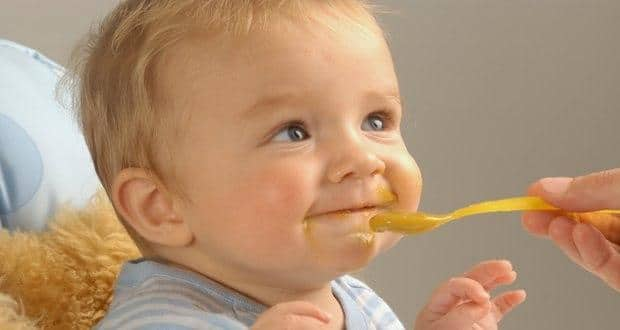 A child may prefer a whole carrot over a grated carrot salad or a stewed carrot dish.
A child may prefer a whole carrot over a grated carrot salad or a stewed carrot dish. - Young children do not like to chew on large and hard carrots, but they will eat carrots cut into slices with pleasure. It is especially difficult for children to cope with carrots with a hard core.
- If the child does not eat fresh fruits and vegetables at all, then cut them into molds (a month, a heart), maybe you will like it? Why not do it with the kids?
- The child can happily eat a small round sandwich with a face made of vegetable pieces.
- If you are making a salad for children, consider their wishes. As a rule, children like to eat different foods separately.
- A child who does not eat boiled rutabagas or carrots happily eats them raw. A child who does not want to eat raw carrots will gladly eat them boiled in vegetable stew.
There are many different uses for fruits and vegetables.
Fruits and vegetables do not have to be eaten fresh or boiled, they can be discreetly added to various dishes:
- soups, vegetable stews, casseroles, wok
- pasta, sauces, cereals, meatballs
- herbs (e.
 g. dill, parsley) for seasoning dishes
g. dill, parsley) for seasoning dishes - in pies, cakes, pizzas
- fresh berry sauces for desserts, fruits in jelly and jelly
- in smoothies, milk and juice drinks
Teach your child to enjoy a variety of simple salads, such as carrot or kale salad. But to get the child used to different tastes, try other salads, for example, a salad of sauerkraut, pumpkin, onions (bulb and green).
Children grow in periods, which means that there may be times when the child eats too little, and there are times when he eats more.
- It is useful to ensure that food intake and energy expenditure are balanced.
- If the child is very active, he should eat more.
- If the child seems to be eating too little or too much, keep a food diary - for about a week, write down everything that and how much the child ate and drank.
- If the child has a bowel movement every day, then the amount of food for the child is sufficient, there is no need to worry.
 Often it turns out that the problem is not in the amount eaten, but in the choice of food. After all, you can get as much energy from a couple of candy cookies as from a good portion of soup. Therefore, it is unreasonable to immediately grab a jar of vitamins and minerals, first of all, nutrition should be reconsidered - sufficient, balanced and varied nutrition will provide the necessary substances. The only exception is vitamin D, which all children should receive as a dietary supplement.
Often it turns out that the problem is not in the amount eaten, but in the choice of food. After all, you can get as much energy from a couple of candy cookies as from a good portion of soup. Therefore, it is unreasonable to immediately grab a jar of vitamins and minerals, first of all, nutrition should be reconsidered - sufficient, balanced and varied nutrition will provide the necessary substances. The only exception is vitamin D, which all children should receive as a dietary supplement. - As long as a varied and balanced diet is available to a child, he grows and develops according to his age, there is no cause for concern. If parents still feel that the child may not be getting all the necessary nutrients in sufficient quantities, from time to time blood tests can be done by a doctor to check the health.
- Ideally, it would be better not to give sweets (sweets, chocolates, cookies, soft drinks, etc.) to children under 3 years of age.
- Candy or biscuits should never be given to children as a consolation, reward or boredom dispersal - on a subconscious level, this may affect his eating habits in the future.
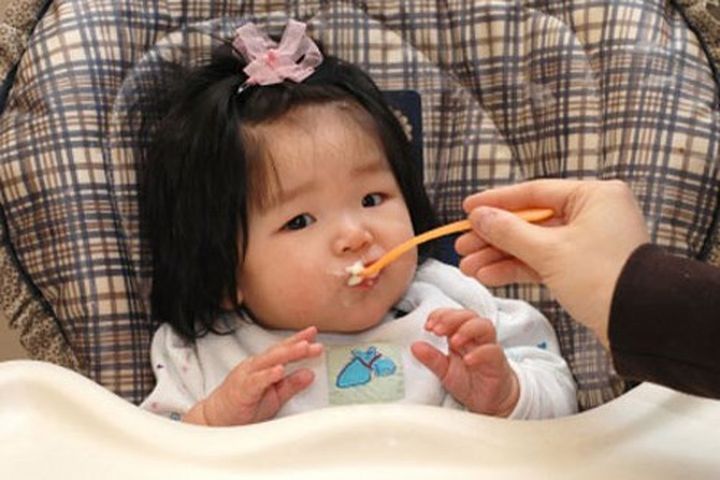 This recommendation is quite difficult to follow if the family has older children, but in this case, avoid bringing home sweets (sweets, cookies) and keep them on the table. Instead, put peeled-cut fruits and vegetables on the table.
This recommendation is quite difficult to follow if the family has older children, but in this case, avoid bringing home sweets (sweets, cookies) and keep them on the table. Instead, put peeled-cut fruits and vegetables on the table. - To satisfy the desire to eat something sweet, nuts and dried fruits and berries are suitable, but one should not be too zealous with them either. Babies and young children can only be given nuts in a ground or highly ground form, and make sure that children do not have an allergic reaction to them. Clean water should always be available to quench thirst. You can drink up to two glasses of juice per week. If necessary, dilute the juice yourself, do not buy nectars, juice drinks and syrups in the store, not to mention soft drinks. While vitamin-fortified water is thought to help you get enough vitamins, one 750 ml bottle actually contains about 40 grams of sugar, which is about the daily dose of sweets for an adult. A varied, balanced, and regular diet (including cereals, fruits and vegetables, and other food groups) ensures adequate intake of vitamins, minerals, and macronutrients, as well as energy, and reduces the desire to eat something sweet.

- The risk of being overweight in adulthood is higher in infants who received formula and complementary foods instead of breast milk as infants.
- It is very likely that an obese child will grow into an obese adult. Fortunately, serious obesity among children aged 0-3 years is very rare and is primarily associated with more serious diseases. At the same time, it is absolutely possible to feed a 2-3-year-old child if he is indiscriminately offered sweets, chocolate, cookies, pastries, soft drinks, etc.
- To check whether the child is growing and gaining weight normally, you can look at the growth and weight curve of infants and children, and in case of underweight or overweight, it is imperative to consult a family doctor or pediatrician for further instructions. You can not limit the nutrition of the child, guided by their own ideas.
Many young children go to nursery from about 1.5 years old. This means that often on weekdays the child eats out three times - breakfast and lunch, as well as dinner.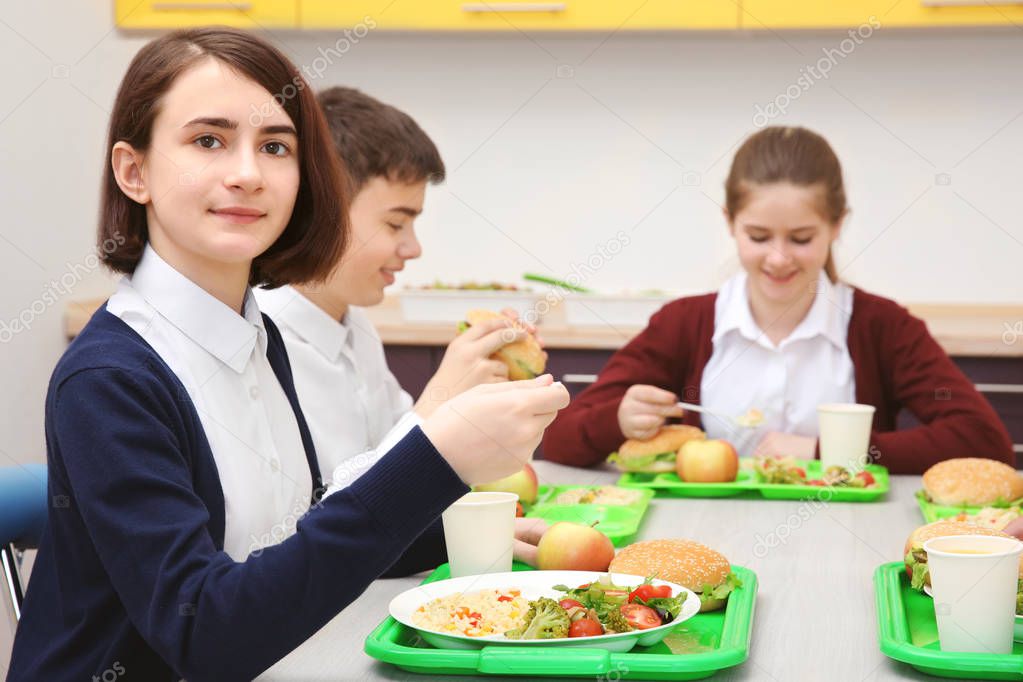 According to how much time the child spends in kindergarten, how many times and what he eats, it is necessary to form the child's home meals. The body needs to be regularly provided with the necessary amount of energy, so it is important to stick to daily meals. Keep up to date with the weekly menu in kindergarten, make different options for homemade dinners or weekend lunches. The more different tastes and dishes you introduce your child to from an early age, the easier it will be for him to get used to food in kindergarten.
According to how much time the child spends in kindergarten, how many times and what he eats, it is necessary to form the child's home meals. The body needs to be regularly provided with the necessary amount of energy, so it is important to stick to daily meals. Keep up to date with the weekly menu in kindergarten, make different options for homemade dinners or weekend lunches. The more different tastes and dishes you introduce your child to from an early age, the easier it will be for him to get used to food in kindergarten.
In Estonia, food regulations have been developed in pre-school child care institutions, which are regulated by an order of the Minister of Social Affairs.
It is not so easy for children under one year old, even under 2 years old, to find the right food if you are not eating at home. Meals offered to children often include too much salt or sugar. Children's meals may appeal to children (often due to their high fat, sugar and/or salt content), but their nutritional value is often very low. Instead of children's meals, it is better to choose a regular dish or soup and ask for it to be prepared with as little salt as possible. The food offered in fast food places is generally not suitable for children under 3 years old (and in fact, adults).
Instead of children's meals, it is better to choose a regular dish or soup and ask for it to be prepared with as little salt as possible. The food offered in fast food places is generally not suitable for children under 3 years old (and in fact, adults).
- When a child turns one year old, the dishes offered on the occasion of his birthday are intended primarily for visiting adults and other children.
- Depending on the age of the children, their age recommendations can be used.
- Food offered to the birthday person must be prepared without salt and sugar. Sweets, soft drinks, potato chips and other products that are very popular at children's birthdays are best removed from the festive table of a child who is one year old, and even 2 and 3 years old.
- Dishes on the festive table of a 2-3-year-old child should have a mild taste with minimal or no added salt and sugar.
- Child-friendly chopped vegetables such as carrots, paprika, cucumber and cauliflower pieces with unflavored yoghurt dip.

- You can offer fruit on a skewer (melon, pear, watermelon, grapes).
- If desired, you can prepare more dense dishes (salads, homemade pizza, etc.), but they must be prepared from minimally processed raw materials.
- If you offer baked goods, try to find low sugar options (raw sugar, agave syrup, etc. are not good alternatives).
- Always read the label on food packaging! This will help you make a more informed choice.
- The allowable amount of supplements for children is usually less than for adults (the maximum amount is based on adult body weight). Therefore, be careful with colored candy, drinks, cookies with a long shelf life, desserts and sausages, products containing synthetic sweeteners.
- If the child is old enough to participate in the grocery shopping, let the child choose between suitable foods: one or another fruit, various cereal products, various vegetables, etc.
- Avoid the shelves with sweets, biscuits, soft drinks, etc.
 , so that the child does not have a desire to buy sweets. Ideally, it would be to introduce the child to sweets, etc. in small quantities and rarely, and also as late as possible, and exactly after the third year of life. Unfortunately, this recommendation is difficult to follow if there are older children in the family.
, so that the child does not have a desire to buy sweets. Ideally, it would be to introduce the child to sweets, etc. in small quantities and rarely, and also as late as possible, and exactly after the third year of life. Unfortunately, this recommendation is difficult to follow if there are older children in the family. - What to do if the child in the store constantly whines and cries to get what he wants? Read practical tips here.
- Children under 3 years of age should not and should not be given gadgets, especially with meals.
- The child should not be taught to watch TV while eating, as this diverts attention from eating and, in turn, creates poor eating habits in the child. While eating, all attention should be paid to the process of eating.
- Children under 3 are usually very active and need extra energy.
- The principle of a healthy lifestyle is that the amount of energy received from food and the amount of energy expended are in balance.
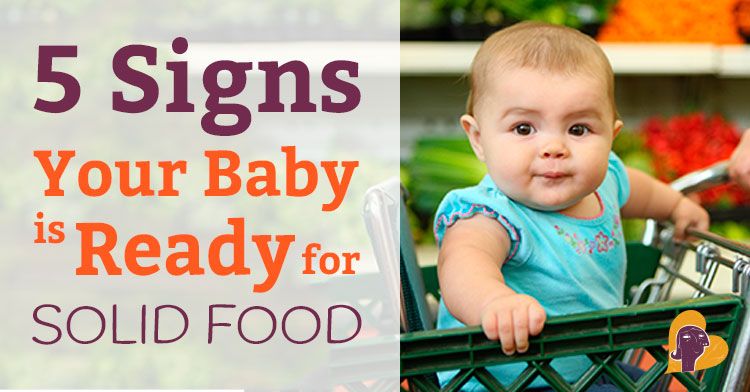
- All children should be as active as possible from an early age - climbing, crawling, walking, jumping, chasing a ball, playing in the yard. Parents themselves should orient their children to the movement, be an example to them.
- Mobility habits formed in childhood are the basis for adult mobility habits.
- Before eating and preparing food, you and your baby should always be thoroughly washed to prevent possible germs that cause disease from getting into the stomach. If food is interrupted (for example, due to a trip to the toilet), hands should be washed again before continuing to eat.
- Teeth should be taken care of before they erupt. Clean water and a soft brush can clean the gums of a two-month-old baby, and must be continued after the teeth erupt. Toothpaste should be used only when the child can spit it out. Teeth should be brushed in the morning and evening. After eating, you can rinse your mouth with clean water.
- In terms of teeth, there should be no more than 5 food contacts per day (3 main meals, 1-2 snacks), with a gap of at least 3 hours between meals.
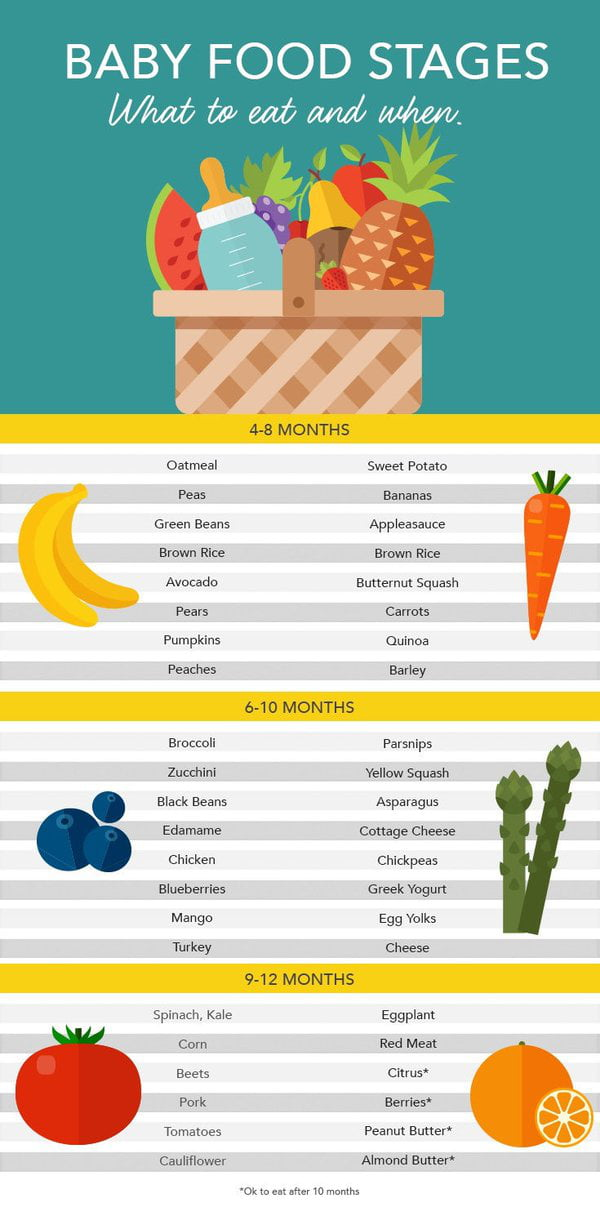
-
Download
WORKSHEET: How to give orders to a child?
-
How to make agreements and set boundaries?
Nutrition of a child in the 2nd year of life: regimen, diet, menu, necessary products | Mamovediya
The child in this period of life grows intensively and therefore must receive nutrition that quantitatively and qualitatively satisfies the needs of his body.
Nutrition should be rational: balanced and consistent with the daily routine. Balance - the inclusion of all the necessary nutrients (proteins, fats, carbohydrates, vitamins, trace elements) in the appropriate proportions that the child's body can absorb.
Nutrition is considered rational if it meets the age needs of the child and is carried out according to the daily routine.
In addition, the so-called rational nutrition includes the culinary processing of food used for a given age, and the correct methodological methods of parents in the process of feeding a child.
The atmosphere surrounding the baby during the meal, the appearance of the dishes served should excite the child's appetite.
Child's appetite is a state of organic need for food, expressed in the child's desire to eat. At the same time, an adequate positive attitude of the child to food is noted.
A good appetite, as a rule, depends not only on how well the menu is compiled, but also on the correct organization of the feeding process. To form and maintain a good appetite, parents must clearly know: what, when and how to feed the child.
How nice it is to feed a child who has a good appetite. It brings pleasure to adults and great benefits for the baby. However, very often it is necessary to observe cases of violation of normal appetite from small deviations (decrease in appetite, refusal of certain dishes) up to its complete absence (anorexia - as it is called in medical practice).
It brings pleasure to adults and great benefits for the baby. However, very often it is necessary to observe cases of violation of normal appetite from small deviations (decrease in appetite, refusal of certain dishes) up to its complete absence (anorexia - as it is called in medical practice).
A child with a decrease or lack of appetite at the mere sight of writing or a reminder of food expresses protest, turns away, defends himself, tightly closes his lips and teeth. It looks like an unnatural negative reaction of the baby to food. Why does a child lose his appetite? Who is to blame for this? The reasons often lie in the wrong method of feeding (strong pressure on the child's tongue with a spoon, the child's lack of interest in food), in the negative sensations associated with eating (too hot food, poor taste), improper organization of the situation during feeding (distraction with a book, toy, punishment), etc.
Many parents, seeing a decrease in appetite, try to force-feed their child, but this further reinforces the child's negative attitude towards food and everything connected with it.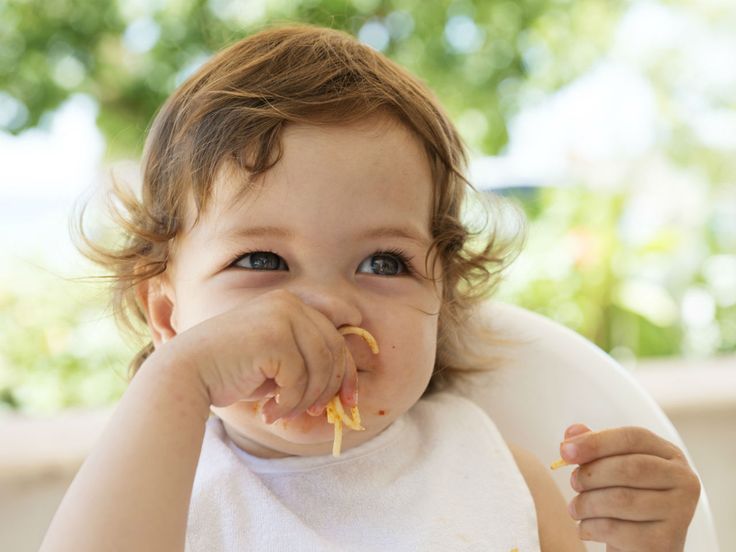 This is strictly prohibited.
This is strictly prohibited.
If a child suddenly lost his appetite, first of all think about whether you could have made mistakes in the process of upbringing and feeding, in especially persistent cases, you should consult a pediatrician.
During feeding, do not forget to introduce the child to the names of dishes (soup, cutlet, compote, etc.) and the properties of objects (food is tasty, sweet, sour, salty, hot, cold, a large spoon, a small one, etc.) .). In this way, the child will form the first ideas, concepts.
Eating processes should be organized in such a way that the child has a desire to eat. Before eating, you should arrange a calm pause after a long walk or noisy and active games.
You should not give your child new interesting toys shortly before feeding, and quickly take them away before eating. By doing this, you will cause a strong emotional reaction that will slow down food arousal and reduce appetite.
While eating with a child, one should only talk about what is connected with this process, concentrating his attention on food, developing the child's active participation in eating.
A child's appetite is increased not only by deliciously cooked food, but also by its beautiful design, attractive dishes specially painted for children. Children should only be seated at the table when food has already been served. You should not put all the dishes on the table at once, the child is distracted from the first dish, reaches for the third or second, as a result, the sequence of eating is disturbed. Remember that many violations in the health of the baby are associated with errors in his diet.
By the age of 1 year 3 months, the baby can already eat solid food with a spoon, and at 1 year 6 months he can eat any food - thick and liquid. Try to develop these independent skills and abilities that are very important for later life in your son or daughter. How joyful it is to look at a baby who skillfully takes food from a plate with a spoon, without mistake brings it to his mouth and actively removes it with his lips. Something, of course, still pours from the spoon past and remains on the lips or chin of the child, but these errors in eating will soon pass, and the baby will learn to carefully eat the entire portion. Remember that a large amount of food contributes to a decrease in appetite, and an insufficient one does not cause a feeling of fullness.
How joyful it is to look at a baby who skillfully takes food from a plate with a spoon, without mistake brings it to his mouth and actively removes it with his lips. Something, of course, still pours from the spoon past and remains on the lips or chin of the child, but these errors in eating will soon pass, and the baby will learn to carefully eat the entire portion. Remember that a large amount of food contributes to a decrease in appetite, and an insufficient one does not cause a feeling of fullness.
A child at this age should be able to chew food. Make sure that he does not keep the pieces in his mouth for a long time, but swallows them in time.
A child of the 2nd year of life is fed 4 times a day with an interval of 3.5-4.5 hours. However, in the first half of the year, the baby can receive another fifth feeding - kefir or milk at 23-24 hours if he wakes up at night or at 6 o'clock in the morning.
Establishing rational nutrition is painstaking and very responsible work, but if you do it systematically, without giving "indulgence" to yourself and your child, then your reward will be good health and good physical development of the baby.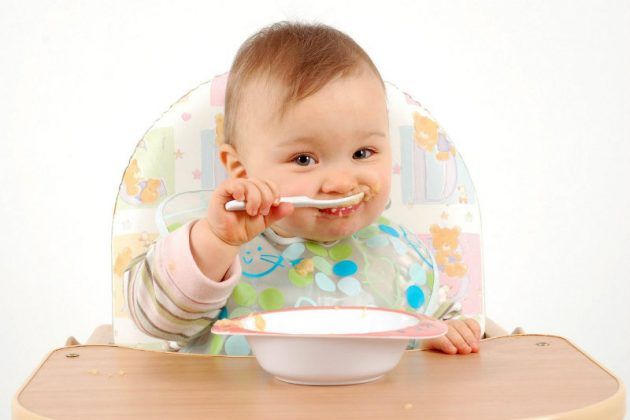
When compiling the menu, it is necessary to correctly distribute how much and what kind of food the child will receive during the day. Feed your baby 4-5 times a day. In the morning it is better to cook dairy dishes, lunch should always consist of soup, meat in the form of mashed potatoes or meatballs with a vegetable side dish, compote or jelly, fruits, kefir are given in the afternoon, a vegetable dish is prepared for dinner.
The one-time amount of food consumed in children of the 2nd year of life is different - up to 1.5 years, somewhat less than in the second half of the year.
Under no circumstances should children of this age be given food from the common table. This is very harmful. Malnutrition of a child older than a year will undoubtedly affect his health in the future. Injury by coarse food to the still unprotected mucous membrane of the child's stomach, the stress state of the gastrointestinal tract organs lead to the formation of early gastritis, enteritis, cholecystitis and other diseases.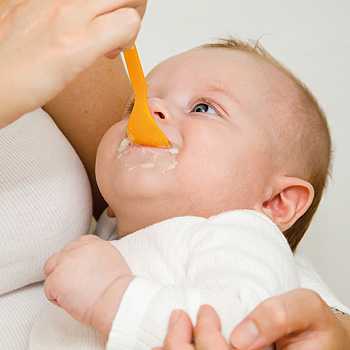
The menu can be diversified by replacing meat with cottage cheese, fish, eggs, introducing a variety of vegetable or cereal dishes, changing the culinary processing of food (mashed potatoes, cutlets, jelly, compote, etc.), improving its taste, adding greens (dill, parsley, celery, etc.).
If a dairy dish is served for breakfast, then in the afternoon you should feed the baby with vegetables and vice versa; if vegetable soup is prepared for lunch, then the second dish should be cereal, etc. To maintain appetite, make sure that meals are not repeated during the day.
This set of products does not have to be used every day, and it is practically difficult, for example, to measure 3 g of cheese for a child. It is important that during the week the proposed list of products be used in baby food. Therefore, cheese can be used once a week and immediately in the amount of 20 g (3 x 7, say, give the baby vermicelli with grated cheese for breakfast.
A few words about food products intended for baby food, or rather, their brief description.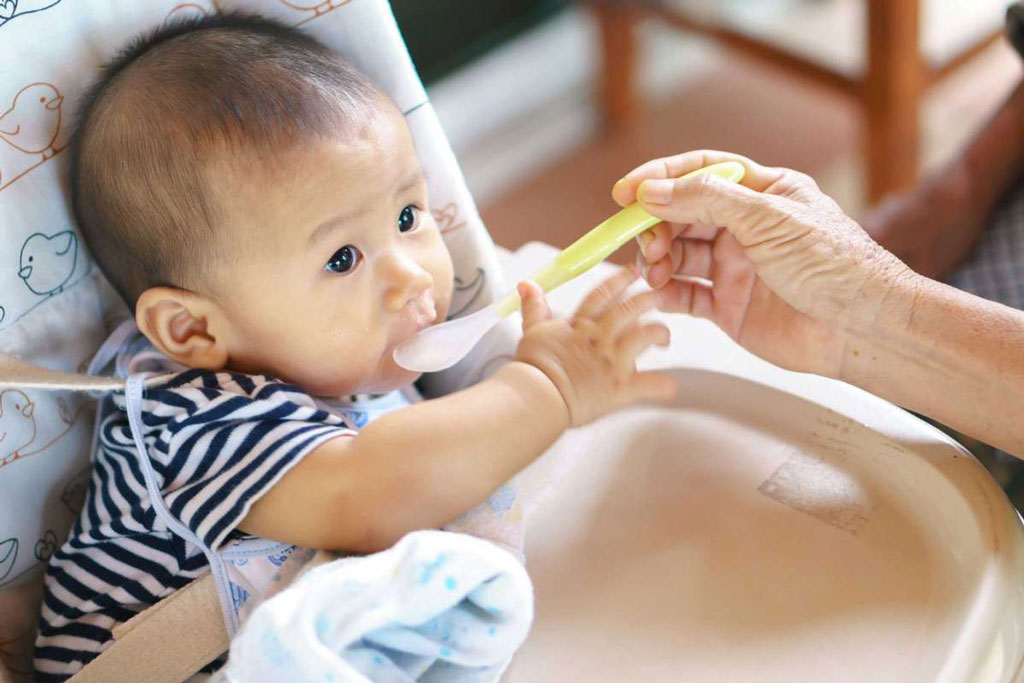
Milk and dairy products. Natural milk can be given to a child only after boiling. One-day kefir and cottage cheese are very useful. Milk should be boiled in a heavy-bottomed saucepan with the lid closed. When preparing dishes from milk (porridge, mashed potatoes), raw milk is added and allowed to boil once with ready-made cereals or vegetables. Milk must not be boiled twice. It should be remembered that excessive milk reduces the child's appetite, so milk should not be given to quench thirst instead of water.
Oils. In the diet of children of the 2nd year of life, both butter and vegetable oil can be used, and the amount of vegetable oil should not exceed 10-15% of the total amount of oil consumed per day (i.e., not more than 2 g per day) . Vegetable oil should be stored in a sealed container, protected from light and air. It cannot be boiled, so it is better to lay it in the finished dish. In the diet of children, it is not recommended to use refractory fats - beef, pork, cooking oil, and margarine.
Meat and meat products. Lean beef, rabbit meat, chicken are useful for children You can use offal - liver, tongue, heart, brains, chicken giblets. Meat should not be soaked in water, as this transfers some of the nutrients into the water. The liver should be fried under the lid and given to the child in a puréed semi-liquid form. For children under 1.5 years old, meat, like other food, should be cooked pureed. This is due to the absence of chewing teeth in a child at this age, the underdevelopment of chewing muscles and the insufficient activity of digestive juices.
Fish and fish products. Children can only be given low-fat varieties of fish - hake, cod, sea bass, pike perch. Fish is equivalent to meat in its nutritional properties, but, in addition, it contains trace elements important for the growth and development of the child (iodine, phosphorus, copper, etc.). Keto or sturgeon caviar should be treated with caution, as it can cause unwanted allergic reactions in children.
Eggs. It is recommended to give children only chicken eggs and be sure to boil them. Raw eggs should not be served, as they can be contaminated with pathogens due to the porosity of the shell, and raw protein is poorly digested in the stomach, and raw yolk can cause allergies. Duck, goose, and eggs of other birds are prohibited from being included in the children's menu.
Bread and bakery products. It is useful for children to give both rye and wheat bread. You can give bagels, bagels, crackers, by the way, children love them very much.
Cereals and pasta. The most valuable in terms of mineral composition are bean, buckwheat, oat and millet groats. But you can use their other types - semolina, peas, as well as pasta. The groats are boiled in water (oatmeal and buckwheat - for l '/g h, millet - 1 hour, semolina - 20 minutes), then unboiled milk is added, and after removing the porridge from the heat - butter and sugar to taste.
Sugar and confectionery . In children's food - in tea, milk, cereals, compotes, kissels - you can add sugar, but in moderation. Remember that excess sugar is harmful to a child, as it can contribute to obesity or diabetes. Other sweets are recommended marmalade, jams, marshmallows, marshmallows, cookies, especially oatmeal, waffles. Do not give children cakes with rich creams, chocolates and chocolates, as well as lozenges, especially rounded ones.
Vegetables, fruits, berries, herbs. All these products are very useful for young children, since, in addition to vitamins, they contain fiber, organic acids, pectin, tannins and volatile substances, as well as minerals and trace elements. Raw vegetables can also be used in children's nutrition. At the same time, they must be thoroughly washed, poured over with boiling water, and then grated on a fine grater. Fruits and berries are best given fresh to a child, and raw juice should be added to a boiled fruit and berry dish.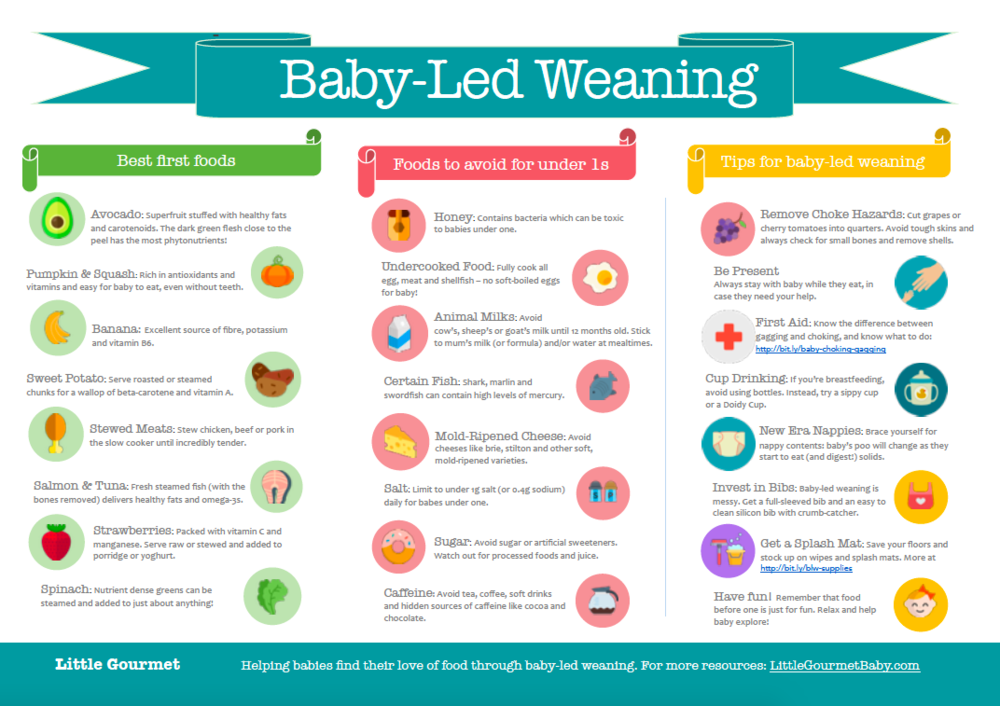 In the nutrition of children, you can use canned vegetables and fruits specially prepared for baby food, as well as compotes, juices, freshly frozen and dried vegetables and fruits. Boil vegetables and fruits in a saucepan with a lid to preserve as many vitamins as possible.
In the nutrition of children, you can use canned vegetables and fruits specially prepared for baby food, as well as compotes, juices, freshly frozen and dried vegetables and fruits. Boil vegetables and fruits in a saucepan with a lid to preserve as many vitamins as possible.
From 1 year to 1 year 3 months
You can be told about the methods of preparing various children's meals by a district nurse or a nurse in a healthy child's office in a children's polyclinic.
The menu for a baby at this age can be compiled as follows:
Breakfast
- Porridge (vegetable puree) -150.0
- Tea with milk (milk) -100.0
- Bread with butter Lunch
- Soup (vegetable, meat) -100.0
- Puree meat (cutlet) - 40.0
- Garnish (vegetable puree, vermichel) - 50.0
- compote (fruit juice) –100.0
- Comens - 30.
 0 222
0 222 - kefir (milk) with a bun of –150.0
- Fruits - 50.0
Polterine 9000 9000
Dinner
- Vegetable (porridge) –150.0
- tea with milk --150.0
- Kefir (milk) -150.0
Recall that the second dinner is provided for those children who wake up at 23-24 hours.
From 1 year 3 months to 1 year 6 months
vegetable oil. This is a very healthy dish, because, in addition to the vitamins it contains, it makes the baby chew food thoroughly, which means it stimulates the development of the child's chewing apparatus.The following foods can be included in a sample menu:
breakfast
Porridge (vegetable puree) –150.0
Tea with milk (milk) –150.0
Bread with oil
- vegetable salad - 10.0
- 11111111111111111111111111111111 Soup —150.0
- Cutlet (meat, fish, liver) — 50.
 0
0 - Garnish (cereal, vegetable) — 80.0
- Compote —100.0
- Snack
- Cottage cheese — 50.0
- Fruit -100.0
- Tea with biscuits -150.0
Dinner
- Vegetable puree (porridge) -150.0
- Kefir (milk) -150.0
From 1 year 6 months to 1 year 9 months
Do you count children as taste? Children very early begin to distinguish tasty food from tasteless, they have favorite and unloved dishes. Try not to include foods that are vital for the development of the child's body.
Sample menu for a child at this age.
breakfast
- Ground carrots - 30.0
- Dairy porridge --150.0
- Tea with milk –150.0
- Bread with oil
- Kefir with a bun -200.
 0
0 - Fruit -100.0
Dinner
- vegetable- (porridge) –200.0
- milk (kefir) –150.0
from 1 year 9 months to two years 9000
Children's food in this age period in this age period in this age period in this age period in this age period it can be liquid, semi-liquid, steamed, and also in the form of pieces (for the development of the child's chewing apparatus). The kid should equally willingly eat any food, no matter in which of the listed types it is served. We recommend the following menu:
Breakfast
- Milk porridge (noodles, vermichel)
- coffee with milk (tea)
- Book with butter (jam, cheese)
Lunch 9000
- Vegetable salad (fresh, cwvised) Sud
- cutlets (meat, fish)
- Garnish
- compote
Salt
- Kefir fruits
- Vegetable dishwashed0012
- In the intervals between feedings, the child can be given a drink (no more than 100 g) of water.


